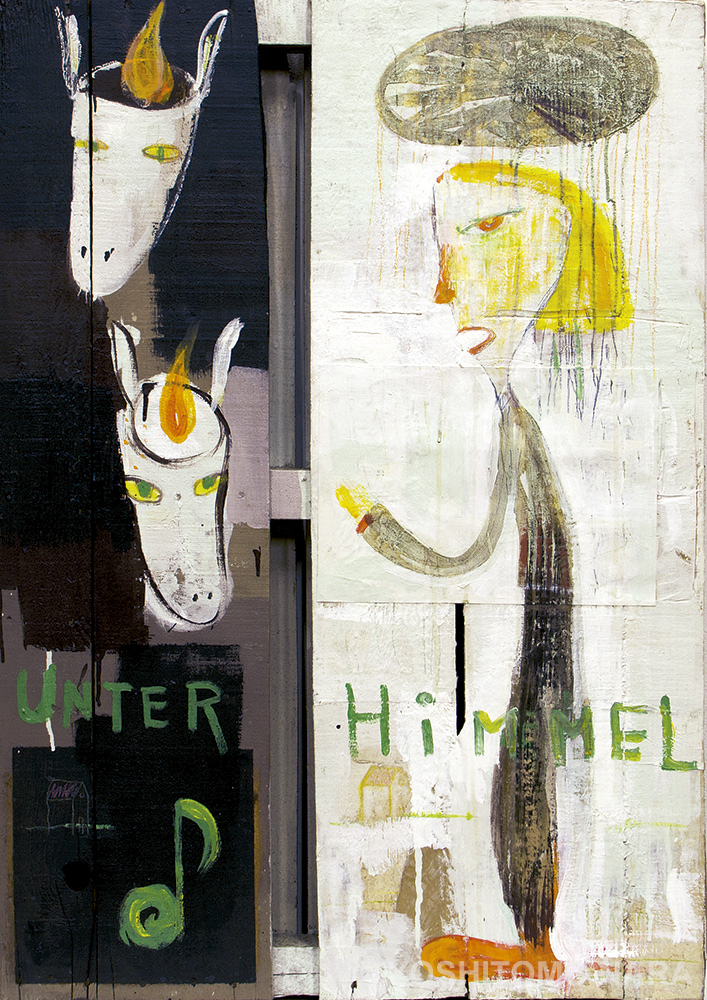A Lonely Place
“Postwar Japan was characterized by economic growth. My parents worked, and my two brothers are much older than I am, so I spent all my time home alone. I didn’t have much to do with them. It didn’t matter if I rebelled or not; nobody would have known. They had no idea what I was really like. I loved music and girls. I felt totally free … but also abandoned.”
Yoshitomo Nara
Yoshitomo Nara was born to a working-class family living in a semi-rural area of Hirosaki. Their house was located at the top of a hill, surrounded by apple orchards and green fields. Nara grew up during the years known as the “Japanese economic miracle,” and, as a consequence, his parents worked long hours outside the home. With no children his own age around him, Nara spent a lot of time by himself. Imaginative and creative from an early age, he enjoyed drawing and made a picture story about adventures with his pet cat. Nara relied on the cat and other neighborhood animals for company, and he listened to music on a radio he had built himself.
The radio expanded Nara’s universe, providing an introduction to the music which has become one of the main preoccupations of his life, a cornerstone for his creativity and the development of his work. Nara listened to the Far East Network (FEN), a radio channel which primarily served the US Armed Forces stationed in Japan during the Vietnam War. American blues music was broadcast on FEN, melodies which often carried overtones of introspection, melancholy, and suffering; and folk songs by American singer-songwriters like Bob Dylan, with their dissenting, anti-war message and support for the civil rights movement; and grassroots folk music coming out of England and Ireland. Nara had no comprehension of the foreign-language lyrics but absorbed the sounds on a sensory level. Combining this instinctual response with what he intuited from the images on the album covers, he understood the music on his own terms and invested it with personal emotion. He found music liberating and it gave him a wider respect for humanity and community.
During his childhood and in his youth, Nara did not aspire to become an artist. Initially, he had considered studying literature, but those who had noticed he was skilled at drawing encouraged him to study fine arts. In 1979, Nara became a student at the private College of Art and Design at Musashino Art University, situated outside Tokyo. But, two years later, on account of the lower tuition fees, he transferred to Aichi Prefectural University of the Arts, closer to Nagoya. There he joined the oil painting department and, after graduating in 1985, he continued onto their master’s program.


